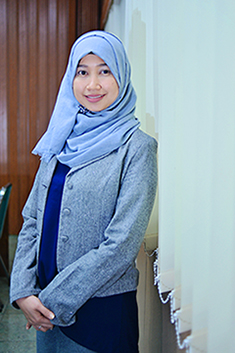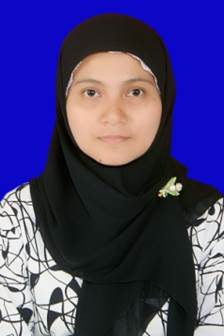Ethnomedicine Study on Justicia gendarussa for Male Contraception at the Nimboran Ethnic, Jayapura
Downloads
Background: Justicia gendarussa from Papua has traditionally been used for the treatment of several diseases, and phytochemical studies have been carried out since 1987. Objective: This study aimed to determine the use of this plant as a male contraceptive that the Nimboran Ethnic and their perspectives have long used. Method: A qualitative method with an ethnographic approach was used, while data were collected through interviews, observations, and documentation. The informants were selected using purposive and snowball sampling. Result: The results showed that 44% of people use it to delay pregnancy, 24% due to young marriage with poor economic conditions, 14% after moving to another place 12% because of tribal wars over fertile land to multiply offspring. The preparation and usage of this plant through the collection, mixing, and manufacturing method and in terms of dosage, time, and duration of use were explored more deeply by conducting interviews with 50 informants. The effectiveness and success as a method of contraception are presented in the way the community has known the plant over different generations, and this method is still used as an alternative option considering the very wide area profile from one place to another. Conclusion: Justicia gendarussa is used by the Nimboran Ethnic group as an ingredient in traditional medicines, especially for male contraception.
Amelsvoort, V. (2003). An Epidemiological Approach to Study Fatigue in the Working Population: the Maastricht Cohort Study. Occupational and Environmental Medicine; 60; i32–i39. doi: 10.1136/oem.60.suppl_1.i32.
Atakpama, W., Batawila, K., Wala, K., Douma, M., Péréki, H., Dimobe, K., Akpagana, K. & Gbeassor, M. (2012). Ethnobotanical Knowledge of Sterculia setigera Del. in the Sudanian Zone of Togo (West Africa). ISRN Botany; 7; 231–257. doi: 10.5402/2012/723157.
Atato, A., Wala, K., Batawila, K., Woegan, A. Y. & Akpagana, A. (2010). Diversité des Fruitiers Ligneux Spontanés du Togo. Fruit, Vegetable and Cereal Science and Biotechnology; 4; 1–9.
Avocevou-Ayisso, C., Avohou, T. H., Oumorou, M., Sinsin, B. (2012). Ethnobotany of Pentadesma butyracea in Benin: a Quantitative Approach. Ethnobotany Research and Applications; 10; 151–166.
Ayantunde, A. A., Briejer, M., Hiernaux, P., Udo H. M. J. & Tabo, R. (2008). Botanical Knowledge and Its Differentiation by Age, Gender and Ethnicity in Southwestern Niger. Human Ecology; 36; 881–889. doi: 10.1007/s10745-008-9200-7.
Bhasin. (2007). Medical Antropology: a Review. Journal Ethnomedicine; 1; 1–20. doi: 10.1080/09735070.2007.11886296.
BKKBN Provinsi Papua. (2015). Pembangunan Kependudukan dan Keluarga Berencana. Jayapura: BKKBN Provinsi Papua.
BKKBN Provinsi Papua. (2017). Pembangunan Kependudukan dan Keluarga Berencana. Jayapura: BKKBN Provinsi Papua.
Dalimartha, S. (2001). Atlas Tumbuhan Obat Indonesia Jilid 2. Jakarta: Trubus Agriwidya.
Daval. (2009). Conservation and Cultivation of Ethno Medicinal Plants in Jharkhand In: Trivedi PC (ed.). Medical plants utilization and convervation; 130-136. Jaipur: Aaviskar Publisher's Distributor.
Depkes RI. (1995). Materia Medika Indonesia Jilid VI. Jakarta: Departemen Kesehatan RI.
Enos, E. Y. (2015). Papeda: Masyarakat Papua (Studi pada Masyarakat Sentani di Kabupaten Jayapura, Provinsi Papua dan Suku Moi di Kota. Yogyakarta: Kepel Press.
Foster, A. (1986). Antropologi Kesehatan (Terjemahan). Jakarta: UI-Press.
Kemenkes. (2014). Profil Kesehatan Indonesia Tahun 2013. Jakarta: Kemenkes RI.
Kemenkes. (2018). Indonesia Demographic and Health Survey 2017. Jakarta: Kemenkes RI.
Kopeuw, P. M. (2017). Menggali Budaya Sentani di Papua Untuk Indonesia. Sentani: CV. Pealtwo Hiyakhe Press.
Loghem, V., Holländer, L. P., Dausset, J., Hässig, A. & Julliard, J. (1951). Formerly Bulletin of the Central Laboratory of the NRC Blood Transfusion Service. Guangzhou: Wiley.Moeso, S. & Agus, P. (1985). Laporan Perjalanan ke Jayapura Sentani (Irian Jaya). Yogyakarta: Universitas Gadjah Mada.
Nina L. E. & Lisa, X. G. (1996). Ethnomedicine in Maluku, Eastern Indonesia. Cakalele; 7; 33–50.
Oosterwal, G. (1962). De Papoea, zijn Ook Mensen Als Wij. s'Gravenhag: Vanhoeve.
Prajogo, B. E. W. (2002). Aktivitas Antifertilitas Flavonoid Daun Justicia gendarussa Burm.f. Disertasi; Fakultas Farmasi Universitas Airlangga, Surabaya.
Prajogo, B. E. W., Juliaan, F., Hinting, A., Pramesti, M. P., Anggraeni, M., Radjaram, A. & Musta'ina. (2011). Laporan Pelaksanaan Uji Klinik Fase III Universitas Airlangga dan Badan Koordinasi Keluarga Berencana Nasional. Surabaya: Universitas Airlangga.
Prajogo, B. E. W. (2014). Autentik Tanaman Justicia gendarussa Burm. f. sebagai Bahan Baku Obat Kontrasepsi Pria. Surabaya: Airlangga University Press dengan LP3 UNAIR.
Prajogo, B. E. W. (2017). Air Gandarusa (Justicia gendarussa Burm. f.) dan Gambaran Gen Hyaluronidase Lewat Analisis PCR, Indonesia Journal, Clinical Paythology and Medical Laboratory. Surabaya: Airlangga University Press.
Sulistyawati, A. (2013). Pelayanan Keluarga Berencana. Jakarta: Salemba Medika.
Swerdlow, J. L. (2003). Nature's Medicine: Plants that Heal. Washington DC: National Geographic.
Taek, M. M., Banilado, L., Neonbasu G., Vianey W. Y., Prajogo, B. & Agil, M. (2019). Ethnomedicine of Tetun Ethnic People in West Timor Indonesia; Philosophy and Practice in the Treatment of Malaria. Integrative Medicine Research; 8; 139-144. doi: 10.1016/j.imr.2019.05.005.
Copyright (c) 2022 JURNAL FARMASI DAN ILMU KEFARMASIAN INDONESIA

This work is licensed under a Creative Commons Attribution-NonCommercial-ShareAlike 4.0 International License.
1. The copyright of this journal belongs to the Editorial Board and Journal Manager with the author's knowledge, while the moral right of the publication belong to the author.
2. The formal legal aspect of journal publication accessibility refers to the Creative Commons Attribution-Non-Commercial-Share Alike (CC BY-NC-SA), which implies that the publication can be used for non-commercial purposes in its original form.
3. Every publication (print/electronic) is open access for educational, research, and library purposes. In addition to the objectives mentioned above, the editorial board is not responsible for copyright infringement


.jpg)















